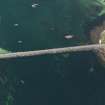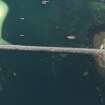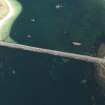Pricing Change
New pricing for orders of material from this site will come into place shortly. Charges for supply of digital images, digitisation on demand, prints and licensing will be altered.
Upcoming Maintenance
Please be advised that this website will undergo scheduled maintenance on the following dates:
Thursday, 9 January: 11:00 AM - 3:00 PM
Thursday, 23 January: 11:00 AM - 3:00 PM
Thursday, 30 January: 11:00 AM - 3:00 PM
During these times, some functionality such as image purchasing may be temporarily unavailable. We apologise for any inconvenience this may cause.
Reginald: East Weddell Sound, Scapa Flow, Orkney
Craft (20th Century), Schooner (20th Century)
Site Name Reginald: East Weddell Sound, Scapa Flow, Orkney
Classification Craft (20th Century), Schooner (20th Century)
Alternative Name(s) East Weddel Sound; Ward Point; Churchill Barrier No. 3; Churchill Causeway; North Sea; Reginald
Canmore ID 102354
Site Number ND49NE 8010
NGR ND 47458 98455
Datum WGS84 - Lat/Long
Permalink http://canmore.org.uk/site/102354
- Council Orkney Islands
- Parish Maritime - Orkney
- Former Region Orkney Islands Area
- Former District Maritime
- Former County Not Applicable
ND49NE 8010 4745 9845
N58 52.24 W2 54.6733
NLO: Weddell Sound [name centred ND 477 988]
Stromness [name: HY 253 090]
Scapa Flow [name centred HY 36 00].
Formerly entered as Site no. 8899.
For adjacent and successor causeway (Churchill Barrier no. 3), see ND49NE 16.
For other blockships in this group, see ND49NE 8001 and ND49NE 8011 -13.
For plan indicating the relative locations and orientations of blockships in this group, see Macdonald 1990, 125.
Horizontal Datum = OGB
General water depth = 2
Circumstances of Loss Details
-----------------------------
The REGINALD was an iron schooner built in 1878 sunk as a blockship at the east end of East Weddel Sound.
Sources: Ferguson 1985; MacDonald 1990 [photo in both books].
Surveying Details
-----------------------------
9 July 1926. The wreck's position is given as 58 52 17.03N, 002 54 47W [the GARTSHORE and LAPLAND are in the same position].
14 March 1972. There is some evidence of steel debris in this area, partly covered in sand and weed.
Report by Undermarine Operations, 5 March 1972.
5 March 1976. A large piece of wreckage shows above the level of mean low water centred on 58 52 14.4N, 002 54 40.4W. It is approximately 35 metres in length and appears to be the stern section of a blockship. There is also a small piece of wreckage showing above mean low water, lying on a bearing of 021 degrees, 75 metres from the above position. Both of these pieces of wreckage are shown on Ordnance Survey aerial photography dated 16 May 1973.
Hydrographic Office, 1995.
(Classified as iron steamship: date of loss cited as 14 September 1914). Reginald: this vessel was scuttled as a blockship in East Weddel [Weddel] Sound.
Registration: Waterford. Built 1878. 930grt. Length: 73m. Beam: 10m.
(Location of loss cited as N58 52.28 W2 54.78).
I G Whittaker 1998.
Length: 240 ft (73.2m): date of sinking 15 September 1914.
'Unballasted. Has not moved. Upperdeck awash at H.W. Very good condition. Likely to last' (Report dated 28 June 1915 and accompanying panoramic sketch dated 8 December 1915).
The accompanying panoramic drawing (of East Weddel Sound, looking W from the N point of Burray) depicts only an essentially intact cargo vessel of flush-decked form. Three masts (two of them forward of the superstructure) and the funnel remain erect. What appear to be boats and derricks are apparent aft.
The accompanying map depicts this vessel in hatched outline as lying NW-SE close to the shore of Burray. It is thus the most southerly blockship of the group. The bows are to the NW.
Information from RCAHMS (RJCM), 30 January 2004.
PRO [Kew] ADM116/2073A: dated 17 December 1919.
Field Visit (August 1997)
Throughout the two World Wars Scapa Flow served as the base of the British Home Fleet. Access to these waters was guarded by a series of coastal batteries, booms and blockships. The blockships comprised old and damaged vessels which were deliberately sunk in position so as to form a submarine obstacle to deter enemy incursions. By 1943, the completion of the Churchill barriers, which cut off the eastern approaches to Scapa Flow, rendered the blockships obsolete. After 1945 some of the blockships were dispersed by explosive to clear the shipping lanes while many others were salvaged for parts and metal. The wrecks of several blockships remain on the sea bed and in the inter tidal zone.
(i) To the E side of Churchill Barrier #3, the wreck of the Reginald (ND 49 NE 8010) lies in shallow water. This 930 tons iron three-masted motor schooner was built in 1878 in Glasgow and was sunk in 1915. The stern section of the hull is visible above the water line.
(ii) The Lapland (ND 49 NE 8013), a 1,234 ton steel single-screw steamer was built in Dundee in 1890 and registered in Liverpool. Little of this blockship is now visible, since the barrier was constructed over it.
(iii) The Gartshore (ND 49 NE 8012), a 1,564 tons iron single-screw steamer, was built and registered in South Shields. She lies to the W side of the barrier.
(iv) The Martis (ND 49 NE 8011), a 2,483 ton steel single-screw steamer, was built in South Shields in 1894. She lies to the W side of the barrier.
(v) The Empire Seaman (ND 49 NE 8001) )was a steel single-screw steamer of 1,921 tons. Built in Lubeck in 1922, she was seized by the Royal Navy in 1940 and sunk as a blockship. She lies to the W side of the barrier.
Moore and Wilson, 1997
Coastal Zone Assessment Survey
Reference (2011)
Whittaker ID : 2550
Name : REGINALD
Latitude : 585217
Longitude : 25447
Date Built : 1878
Registration : WATERFORD
Type : SS (IRON)
Tonnage : 930
Tonnage Code : G
Length : 73
Beam : 10
Draught : 5m
Position : Exact Position
Loss Day : 14
Loss Month : 9
Loss Year : 1914
Comment : Scuttled as a blockship in East Weddel Sound
Reference (19 April 2012)
UKHO Identifier : 001254
Feature Class : Wreck
State : LIVE
Classification : Unclassified
Position (Lat/long) : 58.87067,-2.91122
Horizontal Datum : ORDNANCE SURVEY OF GREAT BRITAIN (1936)
WGS84 Position (Lat/long) : 58.87025,-2.91283
WGS84 Origin : 3-D Cartesian Shift (BW)
Position Quality : Unreliable
Depth Quality : Depth unknown
Water Depth : 2
Vertical Datum : Lowest Astronomical Tide
Name : REGINALD
Type : BLOCKSHIP
Flag : BRITISH
Tonnage : 930
Tonnage Type : Gross
Date Sunk : 14/09/1914
Contact Description : Partial wreck
Original Sensor : Reported Sinking
Last Sensor : None reported
Original Detection Year : 1914
Last Detection Year : 1992
Original Source : Other
Last Source : Other
Circumstances of Loss : **IRON 3 MASTED M SCHOONER, BUILT 1878, SUNK AS A BLOCKSHIP ON E END OF E WEDDEL SOUND. (WKS OF SCAPA FLOW, DIVE SCAPA FLOW).
Surveying Details : **H3875/26 9.7.26 POSN 585217.03N, 025447W. (GARTSHORE & LAPLAND IN SAME POSN). (C 8009/4).
**H7308/56 13.5.59 INS CAUTION NOTE ON 35. - NM 1924/58.
**H2496/72 14.3.72 THERE IS SOME EVIDENCE OF STEEL DEBRIS IN THIS AREA, PARTLY COVERED IN SAND & WEED. (UNDERMARINE OPERATIONS, 5.3.72).
**H2496/72 14.3.72 NOT SHOWN ON NC 35 (AREA BLUED OUT).
**H1270/76 5.3.76 LARGE PIECE OF WRECKAGE ABOVE THE LEVEL OF MLW CENTRED ON 585214.4N, 025440.4W. APPROXIMATELY 35MTRS IN LENGTH. APPEARS TO BE STERN SECTION OF A BLOCKSHIP. THERE IS ALSO A SMALL PIECE OF WRECKAGE SHOWING ABOVE MLW, LYING 021DEGS, 75MTRS FROM THE ABOVE POSN. BOTH THESE PIECES OF WRECKAGE ARE SHOWN ON SURVEY [E5835/4]. (ORDNANCE SURVEY AERIAL PHOTOGRAPHY 73/137 DTD 16.5.73 FOR PHOTOPLOT PG 1428-LP1).
**28.8.92 THE MOST STRIKING & VISIBLE WK ON THIS BARRIER, STERN SECTION LYING ON STARBOARD SIDE JUTTING SOME WAY OUT OF WATER ON EAST SIDE OF BARRIER. (DIVE SCAPA FLOW).
**11.12.81 COVERED BY LEGEND "WKS" ON NC 2250.
Charting Comments : POSN FOR FILING ONLY
Date Last Amended : 09/02/2005
Project (2013 - 2014)
The Scapa Flow 2013 Marine Archaeology Survey Project, commissioned by Historic Scotland, undertook remote sensing surveys and archaeological diving evaluations at some of the sites within Scapa Flow, Orkney and at the Churchill Barriers.
The project aimed to establish or confirm the identification, extent of survival, character and condition of around 28 known but mostly poorly recorded First and Second World War wreck sites, 8 salvage sites, several sites thought to be associated with Second World War Boom Defences, and a limited sample of geophysical features identified in previous studies (Project Adair).
The work built on that of previous surveys including those completed as part of the ScapaMap Project (2001 and 2006) and by Wessex Archaeology Scapa Flow Wrecks Survey (2012), amongst others.
The project was completed by ORCA Marine and SULA Diving
Desk Based Assessment (2013)
58 52.240 N 2 54.673 W The vessel could not be dived during the surveys; however, an assessment of the condition of the remains can be made from aerial photographs and surface assessments. The vessel lies listing to starboard in two sections in Weddell Sound. The stern is oriented northwest to southeast in the same alignment as Churchill Barrier 3. The
bow section is slight further northeast of the remains and is oriented north to south. The remains are generally sheltered, but are at risk from coastal accretion with an increase in sedimentation caused by the construction of the barriers.
The stern section is frequently used as mooring point for local fishing vessels who store their gear on a floating pontoon tied off to the wreck. The remains are rusted as there are large sections of corrosion but the surface remains have no marine growth. As the vessel have been cut in half it is possible to see within the lower decks and holds. Part of the superstructure and railings remain intact. The boilers and engine have been removed.
The bow section is much smaller. Also rusted with large areas of corrosion, the remains are less intact and extensive as those of the stern. Although a portion of railing is still in situ, much of the metal deck plating has been removed revealing the frames.
Analysis
These are known to be the remains of the SS Reginald. A British iron steamship built by London & Glasgow Engineering & Iron Shipbuilding Co. Ltd., Govan in 1878 for Waterford Steam Ship Company, Waterford, and SS Reginald was sold to Clyde Shipping Co., Ltd., Glasgow in 1912. The vessel was purchased by the Admiralty in 1914 and sunk as a blockship on the 15th September 1915.
Information from Annalisa Christie, Kevin Heath and Mark Littlewood (ORCA) March 2014
Side Scan Sonar Survey (2013)
58 52.240 N 2 54.673 W The site could not be assessed by side scan surveys as the wreckage was surrounded by poorly marked creels. As the vessels stands out of the water in all states of the tide is also likely that the results would have been poor.
Information from Annalisa Christie, Kevin Heath and Mark Littlewood (ORCA) March 2014






















